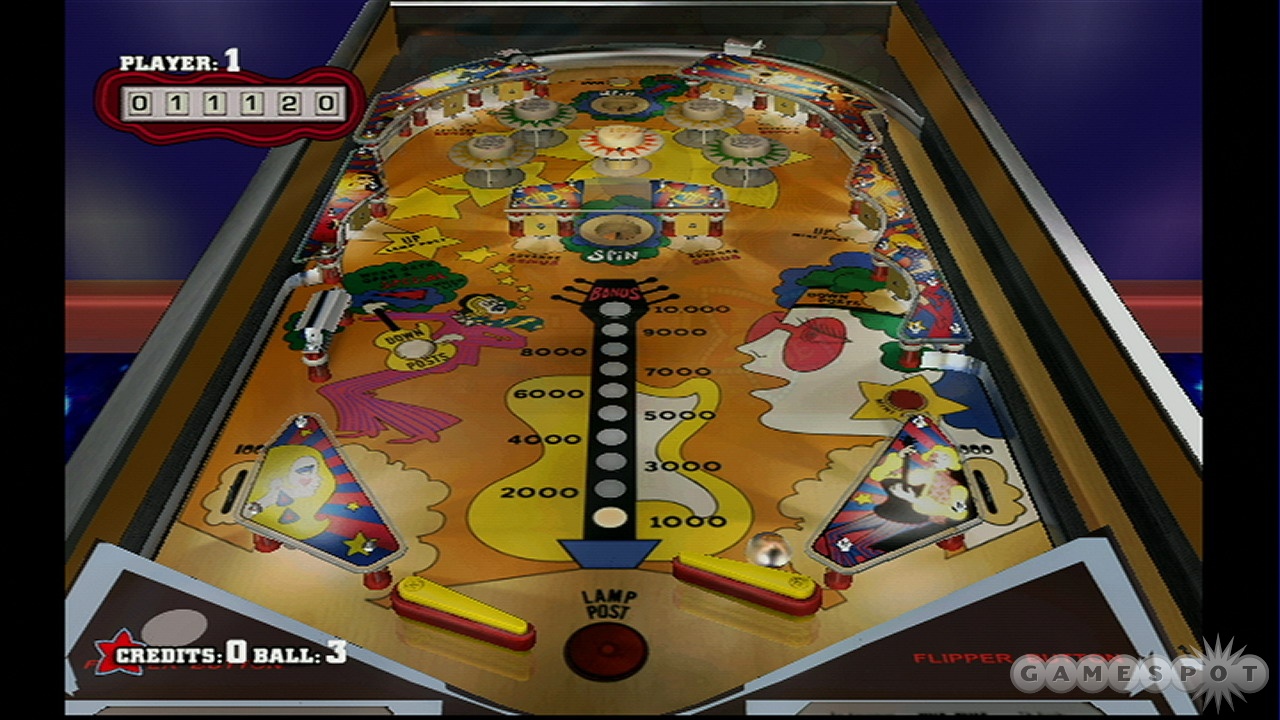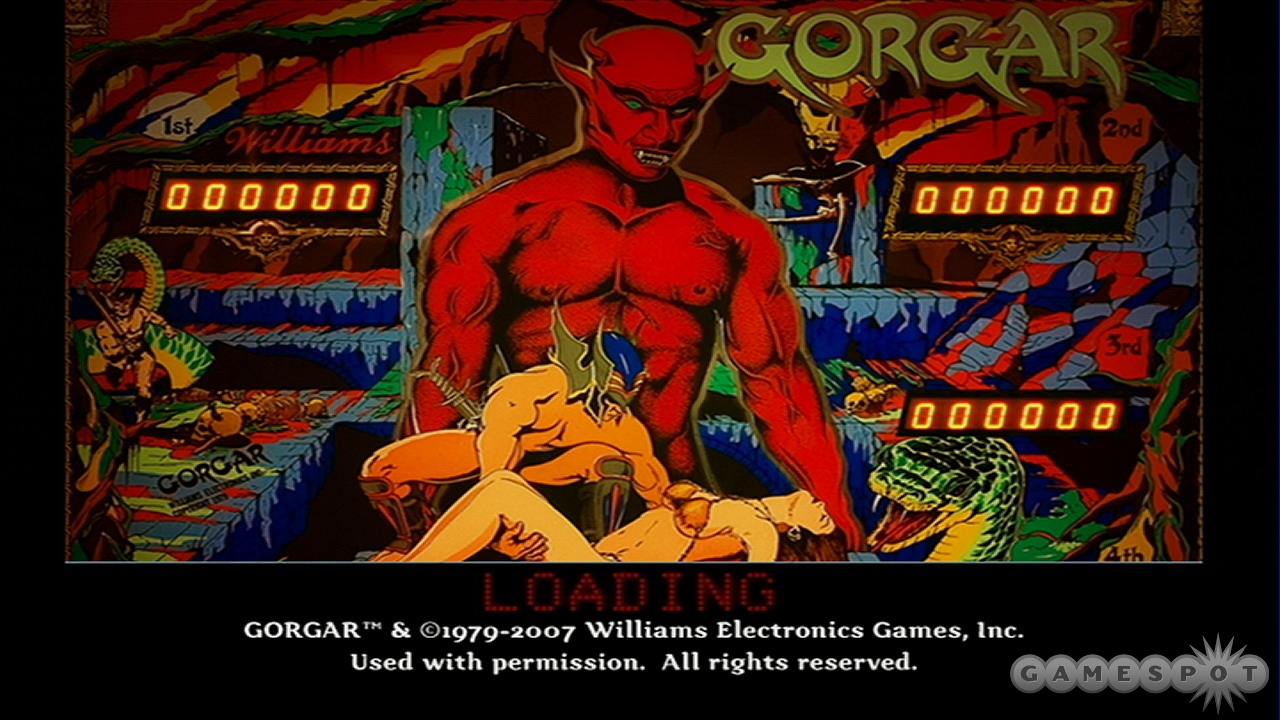The glory days of pinball are back, at least according to the packaging for Pinball Hall of Fame: The Williams Collection. That's not true, no matter how much we'd like it to be, but there's no denying that this collection of 10 tables has plenty to offer for anyone with a penchant for pinball. Not all of the featured tables can be considered classics, but if the lineup was chosen specifically to offer plenty of variety, then it's most definitely a success. Older tables like 1970's Jive Time bear little resemblance to the likes of Whirlwind and Funhouse that were released 20 years later, and playing through this collection in chronological order is a fun way to see how Williams' offerings evolved during that time.

Pinball Hall of Fame's horribly compressed intro movie makes a poor first impression, but once you step into the virtual arcade that serves as the collection's menu system things instantly start looking up. You can choose to practice on tables in a mode that awards you tokens based on your scores and the completion of table-specific goals; you can play against up to three friends in tournaments that span multiple tables; or you can take on the time-consuming Williams Challenge. The challenge mode tasks you with achieving target scores on all 10 tables in a single play session. You get three attempts at each table, and if you fail you have to go back to the first table again. The scores really aren't tough to beat once you learn your way around the tables, which is just as well given that your reward for completing the mode is disappointing to say the least. What do you get? You get a score that you can tell your friends about, and a ranking based on how much you beat the target scores by. Being told that you're a "Tommy wannabe" is a nice reference to The Who's dark, pinball-themed rock opera, but it really isn't what you want to hear after taking the time to achieve high scores on 10 tables.
Regardless of which table you're playing, you'll find that Pinball Hall of Fame's emphasis is on giving you controls that make sense rather than on trying to do anything too clever with motion-sensing. The trigger buttons on the Wii Remote and Nunchuk are used to activate the right and left flippers, respectively, the analog stick launches the ball, and gently flicking either controller nudges the table. The flippers on these tables never feel unresponsive or sticky, as their real-life counterparts sometimes do, but realism is definitely the name of the game and the all-important ball physics are nigh on perfect. Furthermore, the tables' various targets, bumpers, slingshots, switches, and ramps are every bit as believable as the ball that you're trying to hit them with, which ultimately makes Pinball Hall of Fame's gameplay difficult to fault.
Camera options can be problematic in pinball games, and Pinball Hall of Fame takes a "less is more" approach by presenting you with only two options. The first is a static camera positioned roughly where you'd expect your head to be when playing, which affords you a view of the entire table at all times. The second is a dynamic camera that adopts a similar position but zooms in on certain areas of the table when it's appropriate to do so. We really can't say enough about how intelligently and smoothly this camera does its thing, though an option to play from a traditional top-down perspective that really showcased the tables' artwork would still have been a welcome addition.
All of the tables in Pinball Hall of Fame look and sound authentic, right down to the labels detailing how much it costs to play and how many balls you get for a single credit, and the loud knocking sound when you earn an extra ball. It's not always easy to see where some of the table features are because the artwork on raised areas blends in with that on the playfield, but these rare occurrences of confusion can mostly be addressed by turning off the "reflections" option that attempts to simulate the qualities of the glass covering the table.
Pinball Hall of Fame: The Williams Collection doesn't really have any competition, so saying that it's the best pinball game currently available for the Wii wouldn't really count for much. This is one of the better pinball games to be released for any platform in recent memory, though, and it's a lot more affordable than a pinball table to boot.
